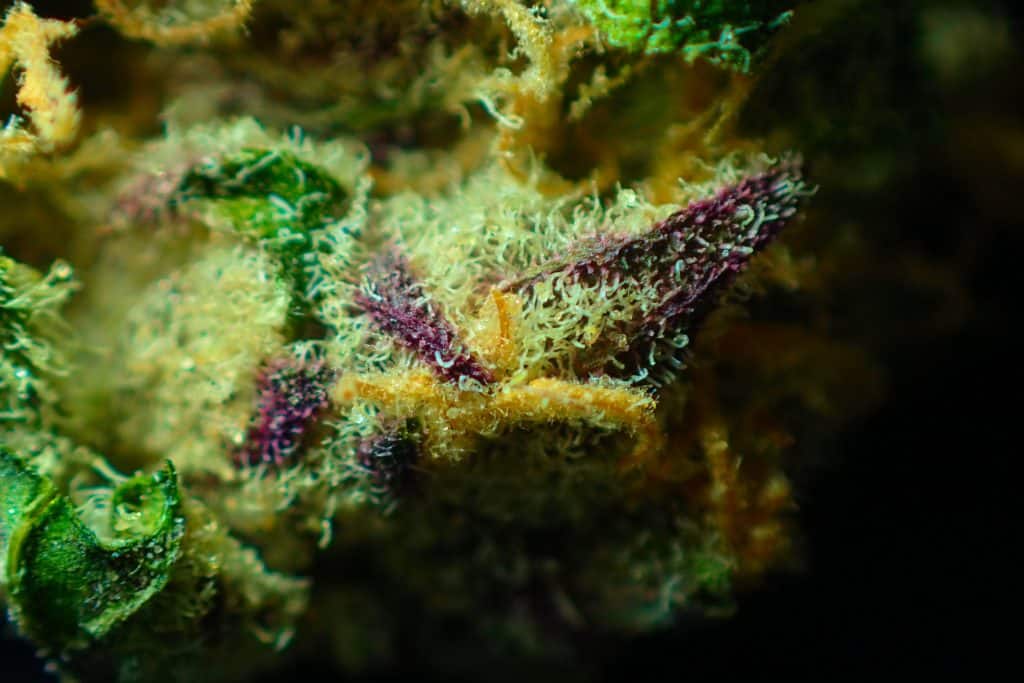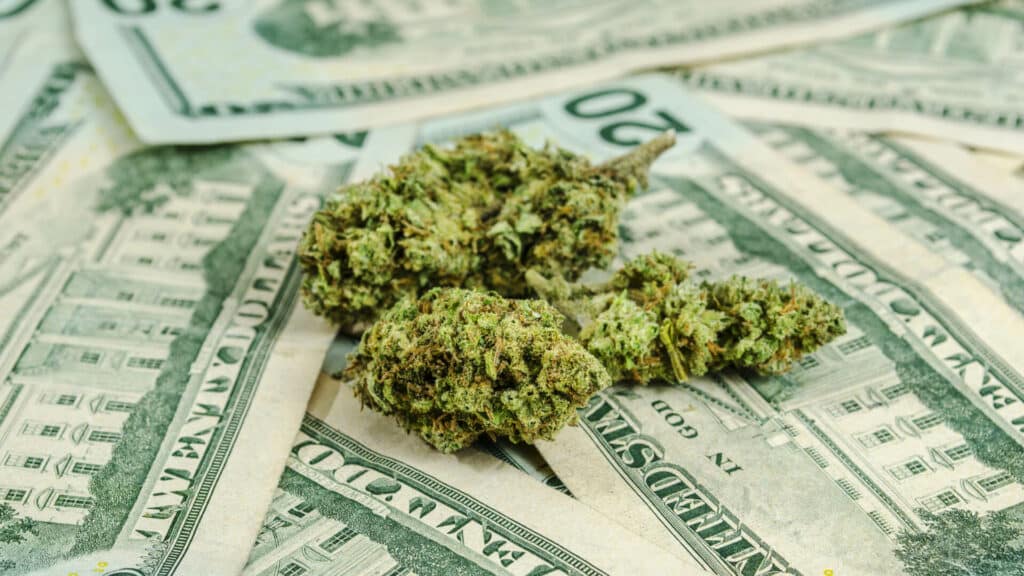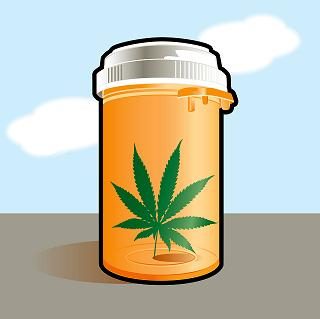 Sometimes I feel sorry for the legislators who are forced to deal with the marijuana issue. I imagine most of them are far removed from any experience with the herb, and those few who did may have toked a badly-rolled joint of seedy ditchweed back when they wrote their college papers on typewriters.
Sometimes I feel sorry for the legislators who are forced to deal with the marijuana issue. I imagine most of them are far removed from any experience with the herb, and those few who did may have toked a badly-rolled joint of seedy ditchweed back when they wrote their college papers on typewriters.
Then I remember that these people literally have the power to decide whether I should be put in a cage because I prefer marijuana’s high to Miller High Life and a bowl of buds over a six-pack of Bud. Any sympathy I have for them transforms into disrespect and disdain, especially when those who’d cage me have such a faulty understanding of their own reasons for doing so.
So to open the New Year, I was presented with a bouquet of reefer madness so pungent it compelled me to write it up three days before the end of my vacation. Oregon State Senator Doug Whitsett wrote “Marijuana: more potent now and unquestionably addictive” in the Oregon Catalyst. I retort and debunk.
The facts regarding the medicinal and recreational use of marijuana have changed over the past several decades.
Marijuana contains two compounds that produce significant pharmacological effects. Delta-9-tetrahydrocannabinol (THC)) is the component that produces an intoxicating high when inhaled or ingested. Cannabinoid (CBD) is the medicinal component that helps to reduce nausea, convulsive seizures, and the symptoms of schizophrenia. It also acts as a significant antagonist that acts to block the intoxicating effects of THC on the human brain.
100% THC pill = “You should not drive or operate machinery until you know how MARINOL affects you.” Once you’ve figured out your high, drive all you like!
CBD is “cannabidiol”. It is one of many “cannabinoids”. THC isn’t just for getting high. It has many medicinal properties as well, like stimulating appetite… or else why would the government approve Marinol, a synthetic THC-only drug?
Marijuana also contains many other organic compounds. Research has shown that marijuana smoke contains fifty to seventy percent more carcinogenic hydrocarbons than tobacco smoke.
Sure, marijuana smoke has more carcinogens, It also has THC, which acts as an anti-tumoral (see 3rd page). What marijuana smoke doesn’t have is wards full of people who smoked it who now have lung cancer, like tobacco.
Today’s marijuana is not the same product that was widely used in the 1960’s and 70’s. Growers have been tampering with the genetics of marijuana since the early 1980’s. Their goal has been to increase production capacity and THC concentration while maintaining low levels of CBD.
If you’re concerned growers have maximized THC to the expense of CBD, you have only prohibition to blame for that. In the 1910-s we were a nation of beer and cider drinkers. By 1930, we were whiskey drinkers, because bootleggers trafficking a prohibited product needed to maximize revenue by smuggling the most “bang for the buck”. Similarly, when you’re selling pot on a black market, “bang for the buck” – especially when an ounce costs $300 – is essential. This is called The Iron Law of Prohibition and it follows proven economic principles.
They have been exceedingly successful in increasing both the production and intoxicating capacity of marijuana while minimizing the medicinal effects. The modern, genetically altered, seedless marijuana plant produces much more of a finished product that has greater than double the intoxicating THC concentration of the unaltered natural plant.

So marijuana is more potent and dangerous now than the 1980s? So why were we locking people up in the 80s, if what they were smoking was so less harmful than what is now legal in two states? Here’s the deal with today’s marijuana: you smoke less of it to achieve the same high. Your $300 weed buy lasts longer. Your lungs take in less smoke. You’re not spending time picking out a lot of stems and seeds.
For instance, in 1983 THC potency averaged less than four percent. In 2009, THC potency of marijuana seized in the United States averaged nearly ten percent. Product recently seized in Oregon and California has tested at well more than thirty percent THC. At the same time, the concentration of the intoxication blocking CBD has remained essentially constant.
People who blather on about “so much more intoxicating” weed have never smoked weed. They imagine schwag is beer and dank is tequila and ohmygod kids now are doing the equivalent of trading a six pack of beer for a six pack of tequila!!! And if that’s in your head, you’re going to be terrified for the kids.
But here’s the reality. You get some schwag. You smoke and smoke and smoke and hack and cough and smoke some more and mmmm ok, now you’re feeling a little bit mellow. But when you have dank, you smoke some, you cough a little, and mmmm yeah now you’re feeling really mellow. That’s it., There is no overdose. There is no “oh god, I shouldn’t have smoked that last hit.” There’s no puking in the toilet, blacking out, and possibly never awakening again. Since marijuana is instantaneous, you rarely smoke more of it than the effect you’re seeking. And even if you do push yourself past your desired high, you just end up “baked” – lethargic and harmless, a nap away from 100% recovery.
The intoxicating effect of genetically altered marijuana is now several times more potent than the natural product. Some genetically altered strains on the streets today are eight to ten times more potent. In fact, modern marijuana users generally call naturally produced marijuana by disparaging names such as garbage, dirt-weed and crap because of its relative lack of potency.
The newer more potent forms of marijuana are unquestionably addictive. In 1992, about 93,000 people were admitted to treatment for marijuana addiction in the United States. Less than two decades later in 2009, more than 360,000 were admitted for marijuana dependency.
As for “addictiveness”, you can’t cite how many people are in treatment for marijuana when that is a sentence for getting caught with marijuana. Do you know how many “alcoholics” we’d have in treatment if the mere smell of beer was enough to conduct a police search and the discovery of a single gulp was enough to declare someone an alcoholic and force them to choose between jail and rehab?
The adolescent brain appears to be especially susceptible to marijuana addiction. In fact, two thirds of admissions for drug dependency among U.S. teenagers are for the purpose of counteracting their use of marijuana.
More than one million Americans reported receiving either inpatient or outpatient treatment for marijuana dependency in 2010. Approximately four and a half million Americans meet the American Psychiatric Association’s criteria for marijuana abuse or dependence. Yet, nearly twenty million Americans, twelve years and older, continue to use this dangerous drug.
Again, we arrest people for weed and then sentence them to rehab. Drug courts have gone from dozens in the 1990s to hundreds today. While it is better to be warehousing pot smokers in rehabs than prisons, it is still a cost we don’t need and a rehab bed wasted on a pothead that would be better utilized by a tweeker, junkie, cokefiend, or drunk. Part of the criteria for marijuana abuse is using it despite legal troubles with it, and again, if merely using it is a crime, then just getting caught makes you an “abuser”.
Let’s ask this: if this drug were so deleterious, why in the world would 20 million people continue to use it? Millions more use alcohol and tobacco, drugs that are far more deleterious to user and society, so why is that not cause for greater alarm and a call for those drugs’ prohibition?
Because the vast majority of people who use those drugs do so responsibly and cause harm only to themselves. We’ve created a paradigm where there is “responsible use” to distinguish from “abuse”. We’ve crafted regulations and social norms and public education to reduce the harms from those drugs and to make them harder (not impossible) for kids to obtain. Year after year, you’ll see surveys showing teens can buy weed much easier than beer or cigarettes. You’ll also find that youth use of cigarettes and alcohol are at their lowest recorded levels ever and still dropping.
Oregon ranks about fourth in the nation in that troubling statistic. More troubling still, in 2011 more than one in ten of Oregon’s eighth graders, and nearly one fourth of its high school juniors, self-reported using marijuana during the past thirty days.
That’s troubling. Not as troubling as the 1997 Oregon YRBS, which showed 15.5% of eighth graders and 23.4% of high school juniors had used marijuana in the past thirty days. That’s right, the year before medical marijuana in Oregon, the monthly marijuana use figure for 8th graders was 4.4 points higher (11.1% in 2011) and the figure for 11th graders was 2.8 points higher (20.6% in 2011) than it is now. In other words, since we’ve passed all these medical marijuana laws, fewer kids are smoking pot every month.
The National Survey of Drug Use and Health has reported that youths between the ages of twelve and seventeen, who reported that they had used marijuana during the past year, are more likely to sell drugs, steal, carry a handgun, and to participate in both individual and group violence. Most marijuana offenders are incarcerated for these and other illegal activities. In fact, less than one in a thousand of those currently incarcerated in Oregon prisons is being held for only the possession of marijuana.
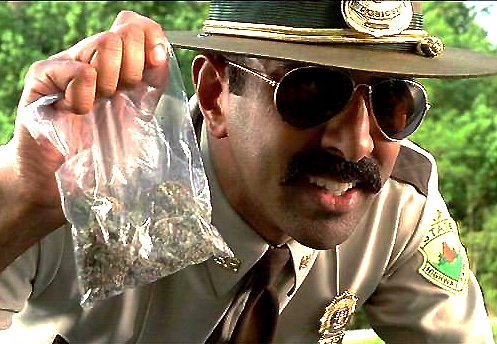 Sure, less than 0.1% of state prisoners are there only for marijuana possession. First of all, that’s 14 people rotting in prison for just marijuana possession. But second, that figure doesn’t count all the ways marijuana lands you in prison. Did you have your marijuana in two separate baggies? That’s “intent to deliver” and now you’re in prison for being a “drug dealer”. Did you own a hunting shotgun? Now it’s “using firearms in the commission of a drug felony” you’re in prison for. Are you a father? “Felony child endangerment.” Growing a plant, just for yourself, never for sale? “Felony cultivation.” Were you on probation for some other crime for which you already served your prison sentence? “Probation violation.” And these figures don’t consider people in a city or county jail for pot possession (213 under “local control” for “drugs”). There are on average 193 arrests for just marijuana possession in Oregon every month, and another 53 per month for manufacture (growing). Third, prison is not the only negative outcome for those Oregonians; it’s the arrest that upends their lives and costs them legal fees. They get probation, lose driving privileges, must attend rehab they don’t need, take random pee tests, possibly lose their job, professional license, scholarship, security clearance, and child custody rights.
Sure, less than 0.1% of state prisoners are there only for marijuana possession. First of all, that’s 14 people rotting in prison for just marijuana possession. But second, that figure doesn’t count all the ways marijuana lands you in prison. Did you have your marijuana in two separate baggies? That’s “intent to deliver” and now you’re in prison for being a “drug dealer”. Did you own a hunting shotgun? Now it’s “using firearms in the commission of a drug felony” you’re in prison for. Are you a father? “Felony child endangerment.” Growing a plant, just for yourself, never for sale? “Felony cultivation.” Were you on probation for some other crime for which you already served your prison sentence? “Probation violation.” And these figures don’t consider people in a city or county jail for pot possession (213 under “local control” for “drugs”). There are on average 193 arrests for just marijuana possession in Oregon every month, and another 53 per month for manufacture (growing). Third, prison is not the only negative outcome for those Oregonians; it’s the arrest that upends their lives and costs them legal fees. They get probation, lose driving privileges, must attend rehab they don’t need, take random pee tests, possibly lose their job, professional license, scholarship, security clearance, and child custody rights.
The National Organization to Reform Marijuana Laws (NORML) appeared to be on track in its stated efforts to remove all restrictions on the use of marijuana in Oregon. The long range plan included reclassifying marijuana as a medicine, decriminalizing possession of the drug, and then making it legal by 2016.
In 1998, Measure 67 allowed the medicinal use of marijuana when a physician writes a statement of the patient’s qualifying condition. Physicians cannot write an actual prescription for dosage, potency and frequency of use because marijuana is an illegal drug under federal law.
In 2006, the state legislature enacted the Oregon Medical Marijuana Act. That law expanded the legal right for medical marijuana cardholders to have as many as twenty four plants plus a pound and a half of prepared marijuana in their possession. The law also provided that caregivers could grow plants for as many as four cardholders allowing the caregivers to possess as many as twenty four mature plants and seventy two immature plants.
Uh, for a senator in our state gov’t, your recall of relevant law is troubling. The people enacted the Measure 67 (the Oregon Medical Marijuana Act) in 1998. The legislature modified it in 2006 with Senate Bill 1085, allowing patients to have an incredible 24 plants, allowing growers to provide for 4 patients apiece, with plants that could produce well over 4 ounces (six mature times four ounces = 24 legal ounces to possess).
This was the legislature’s grand solution to the problem of patient access. Patients were already getting ripped off and abused by growers looking to cover their black market crop because there was no “checks and balances” of a regulated dispensary with reliable supply and reasonable prices. When you’re in chronic pain and the only supplier of your medicine says “Hey, I’ll sell you an ounce a month for $200″ while keeping and selling the rest illegally, you keep your mouth shut and accept what you can get. Especially when it now costs you an extra $50 to the state to change that grower.
All this to avoid what the legislature and apparently the people think is the worst case scenario: dispensaries – the one solution that would reduce the power of growers, free patients from shady gray-market dealers, reduce kids’ access to medical pot, and make a bunch of tax revenue for the state. What we got instead was the kind of logical, reality-based thinking on marijuana you get from a body thinks any marijuana plant greater than a foot tall is “mature” and that growers would supply patients with medicine for free.
The production potential of marijuana plants has also been genetically altered. The modern marijuana plant generally produces several times more product than the natural unaltered plant. That increase in volume is in addition to its several fold increase in potency.
In October of 2012, Oregon had nearly fifty seven thousand medical marijuana cardholders. Less than three thousand of those cardholders have qualifying symptoms for the treatment of cancer. More than fifty one thousand have qualifying symptoms for the treatment of some form of undefined pain.
Oh, the dreaded 57,000 patients again. Imagine if it were any other drug and you could claim the government helped 57,000 sick people achieve better health though its use… we’d be working overtime to get that drug to more people! Here’s the fact all the “very few get medical marijuana for cancer / alomst everybody claims pain” people like to omit: you can qualify under more than one condition.
Think cancer might cause some pain? Do people with multiple sclerosis feel much pain? I wonder if Crohn’s disease or HIV/AIDS causes some pain? Mathematically, the people claiming ONLY pain can’t be greater than 40,189 (pain # minus MS #) and could theoretically be as low as 25,320 (pain # minus sum of all other conditions). We don’t know because the law doesn’t authorize the OMMP to collect any but the most rudimentary statistics for that $200 the patients pay annually.
In reality, 57,000 is far too few patients. There are about 19,000 incidents of cancer in Oregon every year, yet only 2,253 cancer patients using medical marijuana. When you consider all the patients who could qualify for medical marijuana, but don’t bother because it’s illegal, expensive, hard to acquire, and their doctor can’t/won’t write a recommendation, the number of patients should be ten times what it is today.
As many as half of the marijuana smoking juveniles who run afoul of the law in Oregon report that they obtained their marijuana from a medical grower or cardholder, according to juvenile justice and addiction staff.
Half of pot smoking kids got their marijuana from someone who has some? Wow, what a shock. Next you’ll tell us half of beer drinking kids sneaked one from the fridge of a parent who drinks.
Ballot Measure 80 that appeared on last Novembers ballot would have legalized the growth and possession of unlimited quantities of marijuana. It also would have allowed the licensed sale of marijuana to licensed state run marijuana stores. Smoking marijuana in public would have been legal in designated areas restricted to people twenty one years of age and older.
Oregon voters wisely rejected the proposal, but not by a very wide margin. Unlimited growth, possession and private use of marijuana would have been legal in Oregon today if only 57,000 people had changed their vote from no to yes. It is time for Oregonians to learn the facts about marijuana.
Starting with you…
The people in the states of Washington and Colorado actually adopted marijuana legalization statutes last November. NORML is emboldened by their successes in Washington and Colorado as well as their near miss in Oregon. They will be back to try again.
You’re right that the voters narrowly rejected wide-open marijuana legalization. You’re right that Washington and Colorado legalized, and as we watch the flow of dollars and people north to Vancouver, perhaps you and your colleagues in the legislature will come up with a legalization you can live with before me and NORML, MPP, DPA, and about 200 incredibly dedicated Oregon marijuana activists show up with some real money and professional campaigning in 2014 and pass legalization with no input from…
Senator Doug Whitsett, the Republican state senator representing Senate District 28 – Klamath Falls
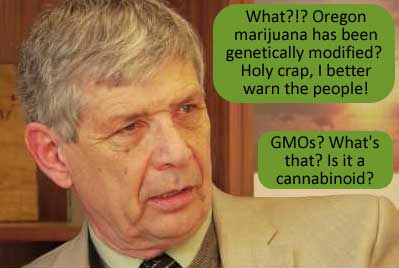
Article originally appeared on radicalruss.com and was republished with special permission

